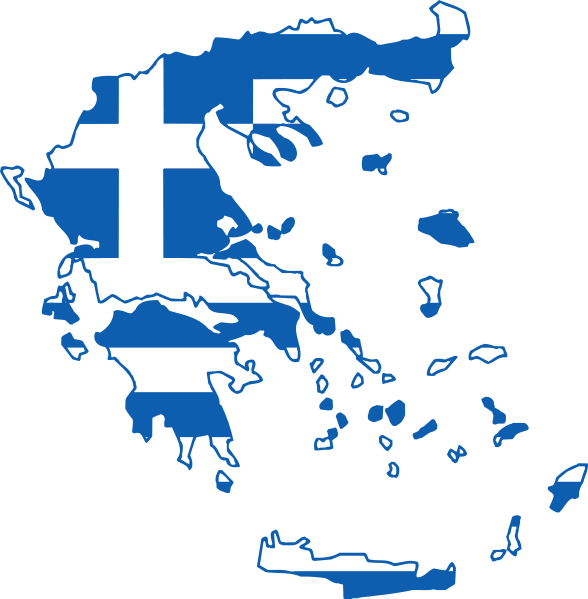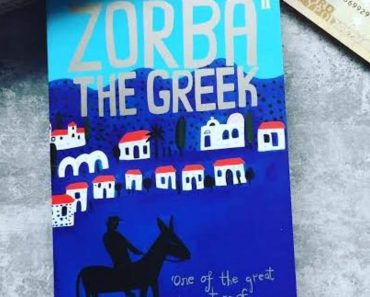Aristotle Onassis, the late Greek-Argentine business magnate, once remarked, “If women didn’t exist, all the money in the world would have no meaning.” This quote and Pablo Larraín’s 2024 Netflix drama Maria, summarize the enigmatic tycoon’s fascination with women and wealth.
Onassis’s life has long captivated audiences worldwide, inspiring numerous books, films, and documentaries, including the Angelina Jolie-starrer movie. But who was the real Aristotle Onassis? Behind the glamorous façade of a shipping tycoon and casanova lay a fascinating, self-made billionaire.
Born in Smyrna, Onassis’s rise to becoming one of the richest men in modern history was nothing short of iconic. Through sheer vision and perseverance, he built a business empire that would make him a household name by the 1950s.
In this piece, we unravel Onassis’s extraordinary life and his relationships with famous women, such as soprano Maria Callas and former First Lady of the US Jacqueline Kennedy.
All about Aristotle Onassis
An early life marked by privilege and tragedy
Born in January 1906 in Karatas, a suburb of Smyrna (now İzmir, Turkey), Onassis was the youngest of two sons to Socrates Onassis and Penelope Dologou. His family was part of the city’s affluent Greek community, and his dad’s successful tobacco trading business meant Onassis and his brother attended top schools.
Onassis was a bright child and by the time he graduated from the local Evangelical Greek School at 16, he was fluent in four languages: Greek, Turkish, English and Spanish. But his life took a dramatic turn in September 1922 when Turkish troops burned down Smyrna in the Greco-Turkish War, forcing Onassis’s family to flee to Athens, Greece, leaving behind their wealth, possessions and businesses.
Tragically, Onassis lost quite a few family members in the Great Fire of Smyrna.
A year after recuperating from the tragedy, a young Onassis left Athens and set off as a stateless refugee for Buenos Aires, Argentina. He landed a job at the British United River Plate Telephone Company.
Having faced incredible hardships and lived in poverty for years, Onassis didn’t let his circumstances define him. Instead, he dared to dream big.
The idea that changed Onassis’ fortune
While working in Argentina, Onassis overheard a conversation about a movie that would show its main character smoking. This led him to start his own brand of cigarettes specifically designed for women.
With the help of his father back in Greece, Onassis started importing English-Turkish tobacco to Argentina. He cleverly tapped into the growing demand for milder tobacco flavours, particularly among American women, and launched the cigarette brands, Osman and Primeros, in the 1920s.
He introduced cigarettes with pink tips, targeting the female market, and even partnered with a Greek singer to promote his brand. By the age of 25, Onassis was already a millionaire and was off to the races.
Taking over the shipping industry to expand his empire
After dipping his toes in the shipping world through his tobacco-importing business, Onassis realised that the real money lay in shipping. He swiftly pivoted, establishing his first shipping and trading company, Astilleros Onassis. This bold move marked the beginning of his meteoric rise in the industry.
During the Great Depression (1929 – 1939), while others were shutting down, Onassis seized the opportunity to buy vessels at bargain prices and built a shipping giant with minimal capital. He named his first ship, “Kalliroi,” after his sister, and subsequent vessels after his parents, “Onassis – Penelope” and “Onassis – Socrates.”
Onassis then relocated his base to New York, while maintaining offices in Buenos Aires and Athens. His fleet of freighters and tankers expanded rapidly, eventually surpassing seventy vessels.
Onassis’s business acumen and ability to navigate the complex shipping market led to enormous profits. He struck gold when Big Oil companies like Mobil, Socony and Texaco signed long-term “time charters” at fixed prices.
Beyond his shipping magnate status, Onassis invested in a diverse array of ventures. His portfolio included companies like Olympic Maritime, Olympic Tourist, and a chemical firm in Persia. His aviation assets included Olympic Airways and Air Navigation.
These investments, combined with his lucrative shipping business, propelled Onassis’s net worth to an estimated USD 500 million in the early 1970s. Adjusted for inflation, this staggering sum would be equivalent to several billion dollars today, cementing Onassis’s status as one of the wealthiest entrepreneurs of his time.
Onassis’ private paradise: Skorpios Island and other properties
Aristotle Onassis’s most treasured possession was Skorpios, a lush haven in the Ionian Sea. This tiny island was Onassis’s personal sanctuary, where he could escape the pressures of his business empire. He poured his heart and soul into transforming Skorpios into a green oasis, planting over 200 species of trees and flowers, and creating gardens and orchards that yielded fresh produce. The island also featured a charming taverna, where Onassis would cook and share meals with friends and family.
He also owned an impressive collection of properties, featuring apartments in Paris, London, Monte Carlo, Athens, and Acapulco, as well as a castle in southern France. In Manhattan, Onassis owned the iconic Olympic Tower, a 52-storey high-rise, and another building in Sutton Place.
His first marriage with Athina Livanos
Aristotle Onassis married Athina Mary “Tina” Livanos, daughter of shipping magnate Stavros G. Livanos and Arietta Zafrikakis on 28 December 1946. Onassis, who was 40 at the time, tied the knot with a 17-year-old Tina. This union was a strategic move for Onassis, aiming to prove himself as an equal among the elite Greek “aristocracy”.
The couple had two children, Alexander (born 1948) and Christina (born 1950). However, the marriage began to unravel by the mid-1950s, and the final blow came when Tina caught Onassis in an affair at their home in Cap d’Antibes.
The couple officially divorced in June 1960, following Onassis’s highly publicised affair with Maria Callas. This marked the beginning of a new chapter in Onassis’s life, one that would be filled with more romance and high-society drama.
Aristotle Onassis and Maria Callas’ fascinating relationship

Maria Callas, the iconic opera singer, and Aristotle Onassis had a whirlwind romance. Their relationship, spanning nearly a decade, was marked by intense passion, a lavish lifestyle, and ultimately, heartbreak.
The two Greek legends met in 1957 at a glamorous party in Venice, hosted by socialite Elsa Maxwell. Onassis was immediately drawn to Callas’s fiery personality and unparalleled talent. At the time, Callas was married to Italian entrepreneur Gianbattista Meneghini, whom she had wed in 1949. Onassis, too, was married to Athina Livanos.
As Callas’s marriage crumbled, she and Onassis grew closer, bonding over their shared Greek heritage and love of luxury. They eventually divorced their spouses, but never married each other.
Behind the glamour and glitz, however, lay a darker reality. Onassis’s behaviour towards Callas became increasingly verbally abusive. Despite this, Callas remained devoted to Onassis, even as their relationship continued to deteriorate.
Pablo Larraín’s 2024 film Maria sheds new light on this captivating chapter in Callas’s life, revealing the highs and lows of her relationship with Onassis. While Jolie played Callas, Turkish actor Haluk Bilginer portrays the business tycoon.
His second marriage to Jacqueline Kennedy

Skorpios Island was not only Onassis’s private retreat but also a romantic haven for his loved ones. He shared the island with his two greatest loves: Maria Callas, the glamorous opera soprano and Jacqueline Kennedy, the widow of U.S. President John F. Kennedy. With Callas, he planted trees and enjoyed intimate moments. Later, Jackie Kennedy became the hostess of Skorpios, and the island was the backdrop for their glamorous wedding on 20 October 1968.
After marrying Onassis, Kennedy took his last name, becoming Jacqueline Onassis, and gave up her Secret Service protection, a perk reserved for presidential widows. Onassis offered her a USD 3 million consolation prize to replace her Kennedy trust fund, which she’d forfeit by remarrying. Interestingly, Ted Kennedy, her late husband’s brother, was involved in negotiating the marital contract.
Jacqueline, affectionately known as “Jackie O”, hosted extravagant parties at Skorpios, along with Onassis, which became the stuff of legend amid constant paparazzi attention.
Aristotle Onassis’ death and legacy
Aristotle Onassis’s life was forever changed when his son, Alexander, died after sustaining injuries from a private jet crash in 1973, at the Hellinikon International Airport in Athens. Devastated by this, he refused to accept it as an accident, instead believing it was orchestrated by the CIA and the Greek military junta leader, Georgios Papadopoulos.
The loss took a profound toll on Onassis’s physical and emotional health. He developed myasthenia gravis, a chronic autoimmune disorder, and eventually succumbed to respiratory failure on 15 March 1975, at the age of 69, in Paris. He was buried alongside his son on the private island of Skorpios.
Onassis’s legacy lives on through the Alexander S. Onassis Public Benefit Foundation, which he established in his son’s memory. The foundation received 45% of his estate, while the remaining 55% went to his daughter, Christina Onassis. After Christina’s passing in 1988, her share was inherited by her daughter and equestrian, Athina Onassis, making her one of the wealthiest women in the world. In 2013, she sold Skorpios to Ekaterina Rybolovleva, daughter of billionaire Russian oligarch Dmitry Rybolovlev for USD 153 million.
(Hero and featured image credits: IMDb)
The information in this article is accurate as of the date of publication.







